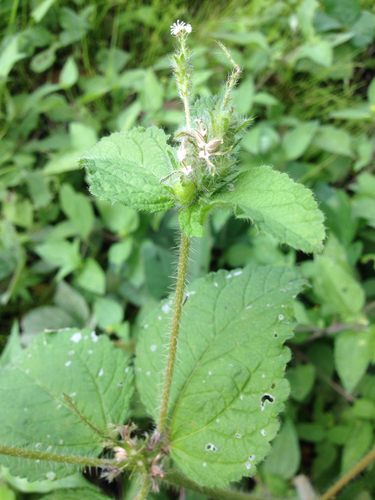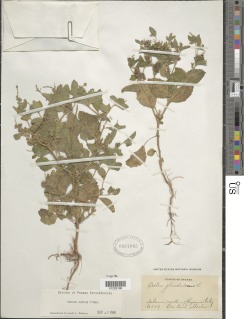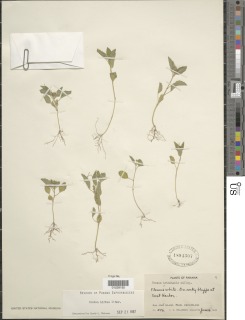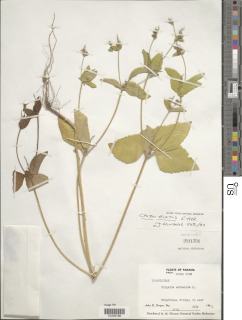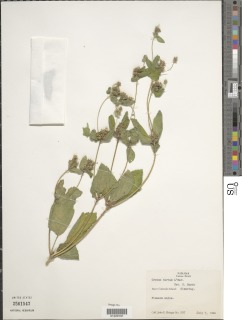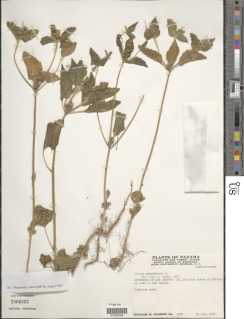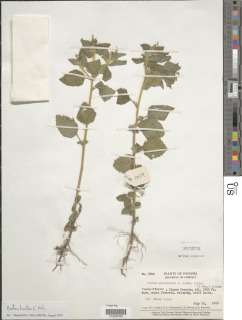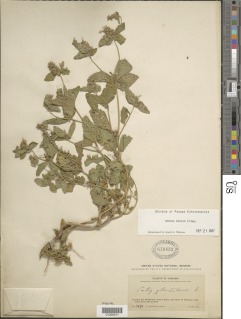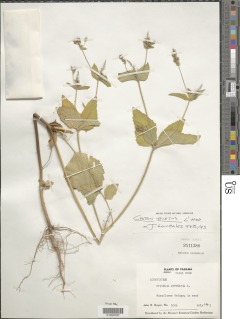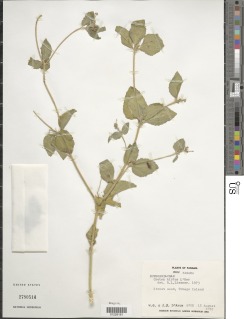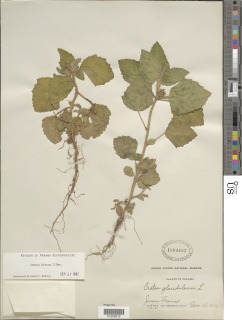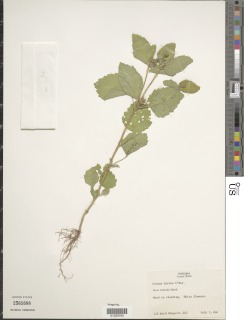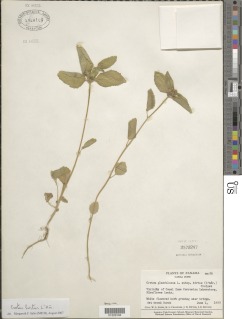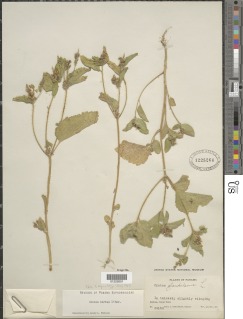

|
|
|
|
Family: Euphorbiaceae
[Croton glandulosus var. hirtus (L'Hér.) Müll.Arg.] |
L'Hér., Stirp. Nov. 17, t. 9. 1785 Monoecious herb, to 40 cm tall; stems retrorsely stellate-hispid. Leaves alternate, sometimes opposite at branch nodes, simple; stipules subulate, 5-8 mm long; petioles to 3.5 cm long, bearing 2 stalked glands at apex, densely stellate-pubescent; blades ovate to elliptic, acute to obtuse at apex, broadly cuneate at base, 2-6 cm long, 1.5- 4 cm wide, one side sometimes shorter, sparsely stellate-pubescent all over, irregularly crenate, basal veins 5, the cauline veins in 3-6 pairs. Inflorescences terminal, bisexual, +/- sessile, to 2.5 cm long, subtended by reduced leaves; staminate flowers white, terminal, 5-parted, ca 3 mm wide; calyx lobed to about middle; petals oblong, equaling calyx lobes; stamens 10 or 11, exserted, in 2 whorls of 5 each plus a central stamen; filaments glabrous; pistillate flowers subsessile; calyx lobes usually 4, slender, unequal; disk 5-angled; petals 5, ellipsoid, to 0.3 mm long; styles 3, free to connate at base, bipartite to bifid. Capsules explosive, subglobose, ca 3.7 mm diam, stellate-hispidulous; seeds compressed, dark brown, smooth, ca 3 mm long, 2 mm wide. Croat 5855. Infrequent in the Laboratory Clearing. Flowers and fruits throughout the year, especially in the early rainy season. Widespread in disturbed areas of tropical America; West Africa; Malaya. In Panama, known principally from tropical moist forest in the Canal Zone, Colón, Herrera, Coclé, and Panama; known also from premontane dry forest in Los Santos, from premontane moist forest in the Canal Zone, and from premontane wet forest in Chiriqui. |

